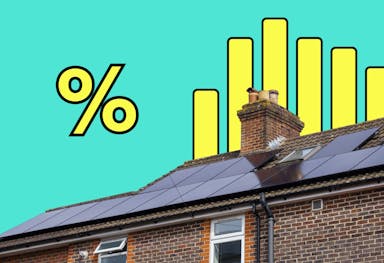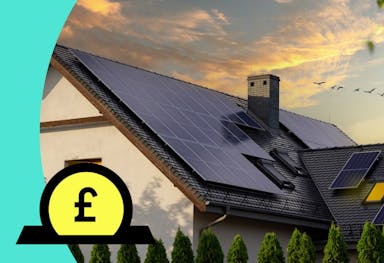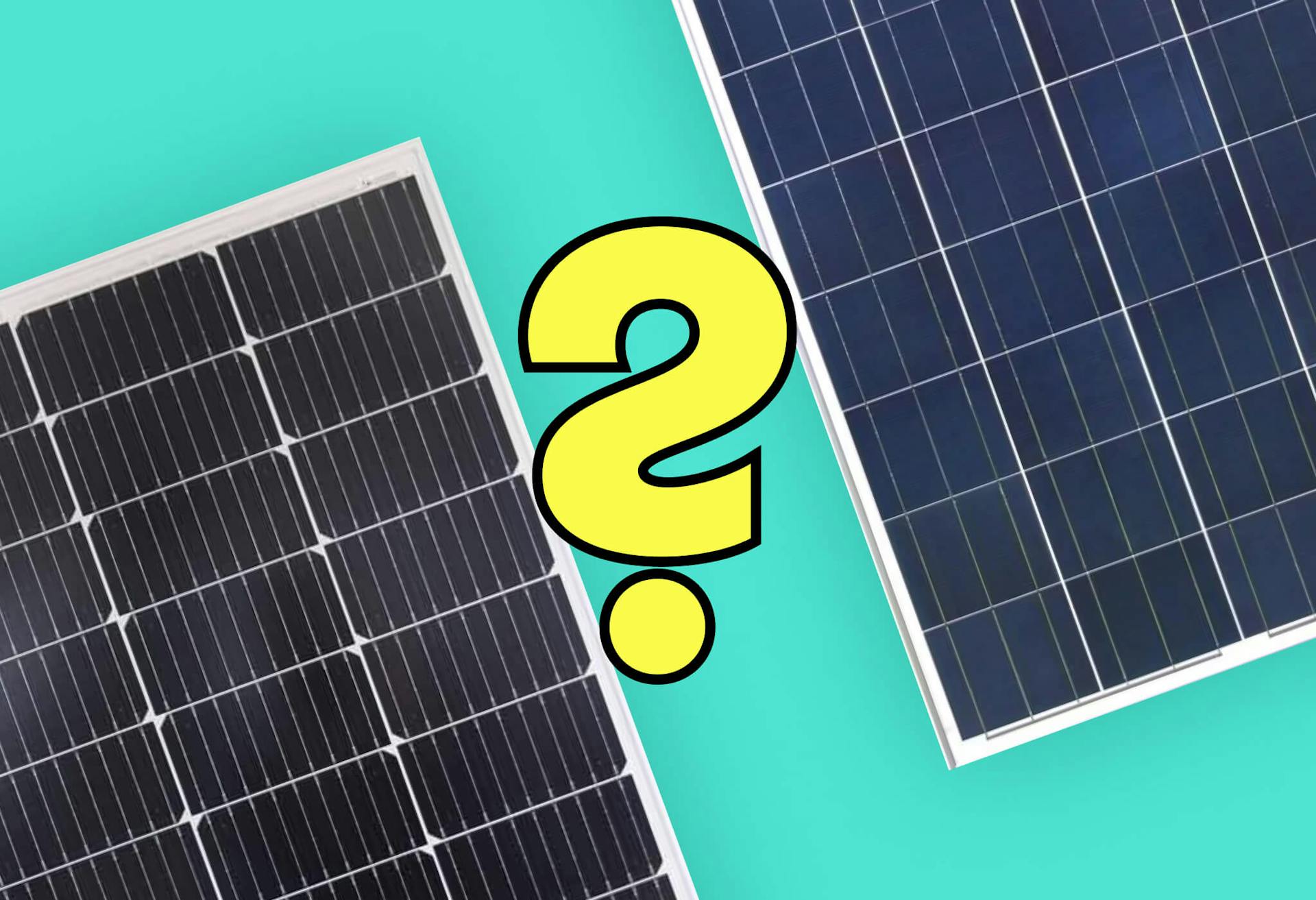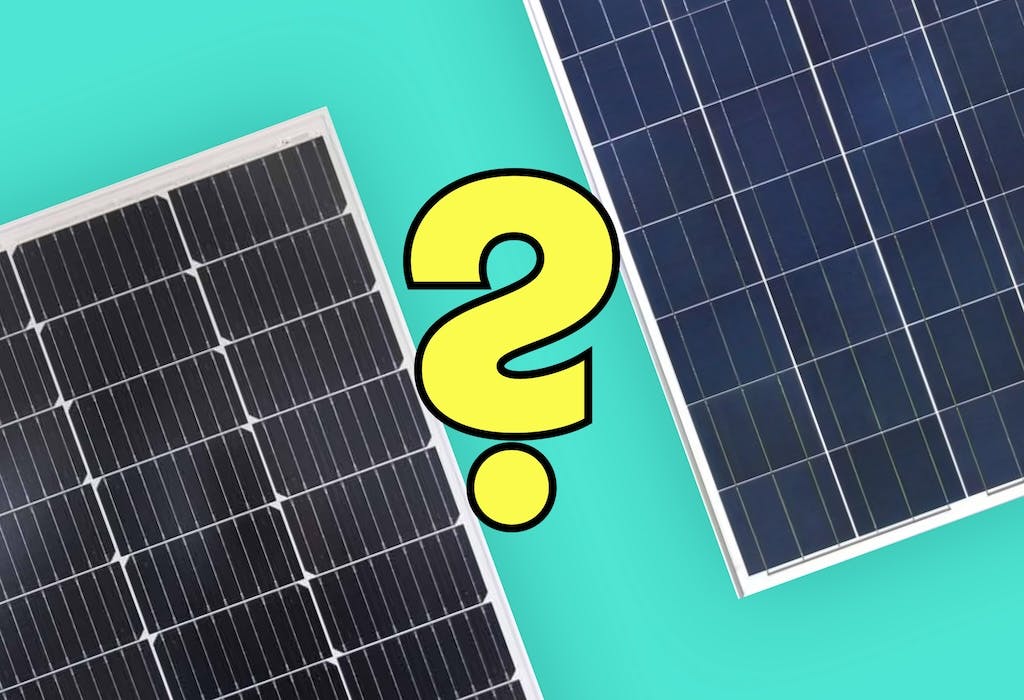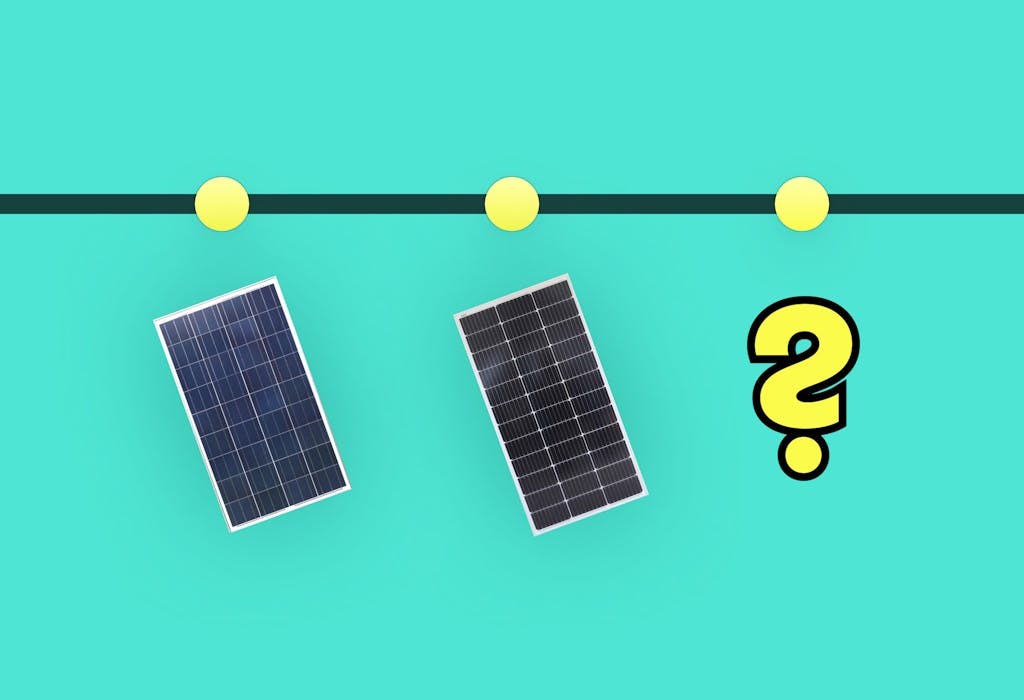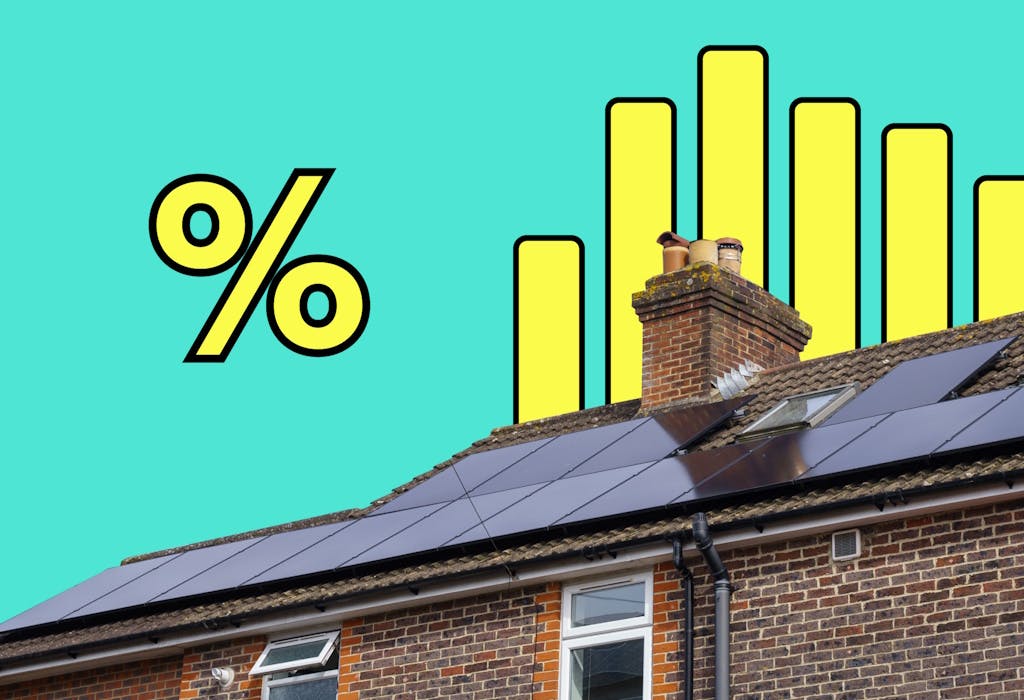- Solar advice hub
- Solar-technology
- Perovskite solar panels: an expert guide
Perovskite solar panels: an expert guide
Here's what perovskite solar panels are, how they differ from traditional panels, and their key benefits and drawbacks.


Why you can trust our content
We know that the solar industry is full of misinformation, but we only use reliable sources, including:
- Our experienced solar experts, installers and system designers
- Our own database of solar & battery system designs
- Authoritative bodies like MCS and the UK government




Calculate savings
What kind of home do you live in?
Calculate savings
What kind of home do you live in?
Perovskite solar panels: at a glance
Perovskite solar panels could be the future. They’ve reached higher efficiency levels than other types, can be made in thin-film form for maximum versatility, and come with low production costs.
However, they’re beset with issues that manufacturers will need to solve before they’re ready to be installed on household roofs.
In this article, we’ll run through what perovskite solar panels are, how they differ from traditional panels, and look at their key benefits and drawbacks.
And if you'd like to find out how much a monocrystalline solar & battery system could save you on your energy bills, enter a few details below and we'll provide you with an estimate.
Find out how much you can save
What kind of home do you live in?
What are perovskite solar panels?
Perovskite solar panels are a relatively new technology made with perovskite materials, which are in turn made with a combination of organic and inorganic matter.
They all have the same crystal structure as a naturally occurring mineral that’s also – confusingly – called perovskite.
This original, natural perovskite was discovered in 1839 by German scientist Gustav Rose, who found it on an expedition in Russia’s Ural Mountains. He named it after Lev Perovski, a mineralogist who was a minister under Russian Emperor Nicholas I.
Around 50 years later, scientists uncovered the properties of metal-halide perovskites, which are the kind used in perovskite solar panels.
These flexible, relatively light perovskites are made from organic matter, metals like lead or tin, and halides that combine elements like bromine, chlorine, or iodine with halogen.
It took until 2009 for these materials to be successfully combined with solar technology, when researchers in Japan made a perovskite cell with 3.8% efficiency. “Organometal Halide Perovskites as Visible-Light Sensitizers for Photovoltaic Cells”, Journal of the American Chemical Society, 2009
But since then, research and development in this area has gone from strength to strength, producing panels with higher efficiency ratings than any others made for domestic use – though they’re very far from entering the residential market.
How are perovskite solar panels different?
Perovskite solar panels are different from traditional panels because they include at least one layer of a metal-halide perovskite that absorbs daylight.
This sets them apart from most other panels, which exclusively use silicon layers to convert the sun’s rays into electricity.
Perovskite can absorb light from the blue part of the light spectrum – unlike silicon, which can only take in light from the red part of the spectrum.
They can also be produced in less energy-intensive ways than monocrystalline solar panels, which has the potential to reduce the solar industry’s already small carbon footprint.
It’s still relatively unknown how well perovskite panels would cope in real-world conditions though, so we’re waiting to see how sturdy and long-lasting they are.
However, when it comes to generating electricity, perovskite panels use the same process as silicon panels: they take in daylight, which releases electrons in the semiconducting layer, creating Direct Current (DC) electricity.
The only difference is that the semiconducting section is made from perovskite.
It doesn’t necessarily need to be a choice between perovskite and silicon, though – manufacturers have started combining the two materials, as we’ll discuss in the next section.
What are perovskite tandem solar cells?
A perovskite tandem solar cell is a relatively new phenomenon, made by inserting a perovskite layer above the cell’s other semiconducting layer.
This is likely how perovskite will be primarily used in the solar industry: in combination with other semi-conducting layers, rather than on its own.
It also allows manufacturers to keep their existing production setups, rather than creating new processes and facilities to make fully perovskite panels, which is much easier and cheaper.
The most popular tandem model is the perovskite-silicon tandem solar cell (PSTSC), also known as a perovskite-on-silicon or perovskite-Si tandem cell.
These cells take advantage of perovskite and silicon’s ability to absorb light from different parts of the spectrum, which makes the cell more efficient.
It’s given manufacturers a way to surpass the Shockley-Queisser limit, a fundamental photovoltaic rule from 1961 which found that a standard silicon cell can only reach a maximum efficiency of 33.7%.
The theoretical maximum efficiency for a perovskite tandem cell is 47%, which has opened up new possibilities for the solar industry.
In 2025, Chinese company LONGi announced that it had hit 34.85% efficiency – and that record will be broken before long.
Manufacturers have also developed perovskite-organic tandem cells, which combine perovskite with a layer made of carbon-based molecules, and have reportedly reached 26.7% efficiency on tiny, 1cm² cells.
And some companies have inserted a perovskite layer into copper indium gallium selenide (CIGS) solar cells to create perovskite thin-film tandem cells, which have reached 26.5% efficiency.
Japan has invested ¥217 billion (£1.05 billion) in this technology, with government official Sadanori Ito calling the cells “a vital trump card to pursue simultaneously decarbonisation, economic growth and energy security.”
How efficient are perovskite solar panels?
Perovskite solar panels are up to 30.6% efficient – a record held by Chinese company Trina Solar since June 2025.
However, in terms of residential solar panels, UK manufacturer Oxford PV is currently on top with its panel, which hit an efficiency rating of 26.9% in 2024.
This is 1.9 percentage points above the 25% achieved by the most efficient solar panels currently on the market – but crucially, Oxford PV’s panel isn’t available to customers, as the firm is focusing more on commercial solar.
Oxford PV’s chief technology officer Chris Case made this clear at the time, saying: “We are taking the next steps to bring this high-efficiency solar technology into commercial use to support our vision of an all-electric future.”
This path also comes with obstacles, though. In 2023, Oxford PV created a commercial perovskite-silicon panel with a 28.6% efficiency rating – but the panels it started selling in 2024 have an efficiency of just 24.5%.
This shows the difficulties associated with translating gains made in the laboratory into more efficient panels being installed on rooftops.
How efficient are perovskite solar cells?
Solar panels are composed of solar cells, which have a higher efficiency than panels.
Perovskite solar cells are up to 34.85% efficient, which is a mark LONGi reached in 2025.
This accomplishment was confirmed by the National Renewable Energy Laboratory (NREL), which keeps track of the record efficiencies of every type of solar cell, including perovskite varieties.
Check out the chart below to see the latest achievements in perovskite solar cell efficiency, as of December 2025.
Perovskite solar cell efficiency by type, 2025
Perovskite-silicon cells are the most efficient type at the moment, showing that adding a layer of perovskite to a standard silicon solar cell is both the simplest and most effective technique around.
They’re streets ahead of perovskite tandem cells, which are made from two perovskite layers, and perovskite cells, which include just a single layer of perovskite.
Researchers are making rapid progress with perovskite-CIGS cells, in which perovskite is added to thin-film cells for higher efficiency ratings, and perovskite-organic cells, which are made from perovskite and carbon-based molecules.
What are the pros and cons of perovskite solar panels?
There are plenty of reasons to continue developing perovskite solar panels – they’re more efficient and cheaper to manufacture than other panels – but there are also downsides.
They’re not yet as stable, long-lasting, or environmentally friendly as standard silicon panels, and there’s no guarantee they’ll be available to households any time soon.
The advantages of perovskite solar panels
- Highly efficient
- Low manufacturing costs
- They can be recycled
Highly efficient
Perovskite solar panels have reached efficiency ratings that current residential panels can only dream of, having topped 30% in 2025.
There’s plenty of progress left to make in this area too, with perovskite panels not suffering the same in-built 33.7% efficiency limit that monocrystalline silicon panels do.
This ceiling is a way off for monocrystalline panels, which have only hit 25% – though they’ve done that while sitting on residential rooftops, where perovskite panels have never gone.
Plus, the gap between standard panels and the best residential perovskite panel around – which is 26.9% efficient – is minimal, at just 1.9 percentage points.
And that panel, which is made by Oxford PV, isn’t even available to customers, with the company choosing to concentrate its efforts on commercial panels.
What’s more, current monocrystalline solar panels are already efficient enough to help homeowners make big savings. In fact, a household in the UK can cut its electricity bills by 86% with a solar & battery system, on average.
This is based on a sample of over 150 systems installed by Sunsave in 2024. The average system is 6.1kWp, with 54% of solar electricity used at home and 46% exported to the grid.
Low manufacturing costs
Perovskite panels can be made using relatively fast, cheap, effective techniques.
The cost of producing a panel with a single perovskite layer is as low as $38.69 (£29) per m². Since the average module is 2m², that means a price of roughly £58 per panel.
In comparison, manufacturers pay between $62.90 (£47) and $79.31 (£59) per m² to make a monocrystalline silicon panel, or about £106 per module.
So by pivoting to perovskite panels, solar companies could theoretically cut their production costs by around 45%.
And even if firms mainly switch to making perovskite-silicon tandem panels instead, the addition of a perovskite layer to a silicon panel shouldn’t inflate the cost too much.
However, these lower costs are unlikely to benefit households any time soon, as this technology still has unresolved stability issues, a comparatively shorter lifespan, and long deployment timelines for the foreseeable future. More on this below.
They can be recycled
Almost every part of a perovskite solar panel can be recycled and used to create a new solar panel with nearly the same efficiency level, according to a study by researchers in Sweden and the US.
And the scientists managed to pull this off with non-toxic, water-based solvents.
This is exciting, as it means panels could potentially be recycled multiple times, into new panels that are almost as effective as their previous selves.
However, this recycling technique is just at the beginning of its development, and could require years of additional research before it can even start being deployed in recycling centres.
Also, monocrystalline panels are already being recycled, with technology that can extract 99% of the materials to be reused. To learn more, check out our guide to solar panel recycling.
The disadvantages of perovskite solar panels
- Unresolved stability issues
- Not available for homes
- They contain lead
- Comparatively short lifespan
Unresolved stability issues
In real-world conditions – rather than in a lab – the performance level of perovskite panels can be seriously affected by oxygen, moisture, ultraviolet light, and elevated temperatures.
These are extremely common occurrences, so this is a sizeable obstacle for researchers to clear before perovskite panels are ready for mass consumption.
Cells in a perovskite panel can also suffer disproportionately from reverse bias, which is an electrical process that can occur when one part of a panel is under shade, and cause hot spots.
These can produce enough heat to melt or burn your panels, crack the glass, and cause irreparable damage to the electrics within.
Not available for homes
You can’t buy perovskite solar panels to put on your roof, and it doesn’t look like that’ll change any time soon.
They’ve only been used in commercial applications in the US and China so far, and the stability issues we’ve mentioned above will need to be fixed before they can be sold to households.

They contain lead
The best-performing perovskite panel – the perovskite-silicon tandem module – works best when it’s made with a soluble form of lead.
Lead can be dangerous if it gets into the surrounding environment, contaminating nearby soil and groundwater. This can happen via accidents, panels being dumped in landfills, or severe weather events that knock panels over.
The way that perovskite panels currently degrade in standard environments can also lead to heavy metals leaking into the ground and harming local wildlife.
Comparatively short lifespan
A perovskite panel’s usable lifespan tends to be relatively short, which makes sense when you consider that real-world conditions can cause them to quickly degrade.
Even when manufacturers add protective casings that protect the panels’ internal workings from oxygen and humidity, their lifespans still don’t reach the level of other types of modules.
Oxford PV’s perovskite-silicon panels are expected to last just 10 years – a paltry amount of time when compared to the 30 to 40-year lifespan of monocrystalline panels.
The manufacturer is reportedly attempting to create panels with a 20-year lifespan by 2027, but that’s still well short of panels you can buy for your home today.
Can you get perovskite solar panels in the UK?
You can’t get perovskite solar panels in the UK yet, and they likely won’t be available to homeowners for a long time.
Oxford PV is currently telling visitors to its website: “We expect the first tandem solar modules manufactured at volume from 2027” – but this is not a hard commitment, and the manufacturer has had to postpone this date in the past.
What's more, there's no guarantee that any of its modules will be designed for UK homes.
When this new solar panel technology was deployed for the first time in 2024, it was for commercial purposes in the US. Oxford PV plans to “pilot residential applications”, but has only said it’ll do so “in the coming years”.
Other companies are making progress, like Chinese manufacturer UtmoLight, which has sold perovskite panels to commercial entities across eastern China, and hit 18.1% efficiency in 2025 with a small 0.72m² perovskite module.
And Queen Mary University of London is working with County Durham-based solar company Power Roll to develop perovskite thin-film panels that are less than a millimetre thick.
But it’ll take a few more breakthroughs to make perovskite a common site on residential roofs in the UK.
Even Martin Wang, a GCL Perovskite director, said in 2025 that the technology cannot currently compete with the efficiency and low cost of traditional solar panels.
If you’re wondering how much you could save with a solar & battery system that includes the most efficient type of panel available – monocrystalline panels – enter a few details below and we’ll provide an estimate.
Find out how much you can save
What kind of home do you live in?
Perovskite solar panels: FAQs
Related articles

Written byJosh Jackman
Josh has written about the rapid rise of home solar for the past six years. His data-driven work has been featured in United Nations and World Health Organisation documents, as well as publications including The Eco Experts, Financial Times, The Independent, The Telegraph, The Times, and The Sun. Josh has also been interviewed as a renewables expert on BBC One’s Rip-Off Britain, ITV1’s Tonight show, and BBC Radio 4 and 5.




